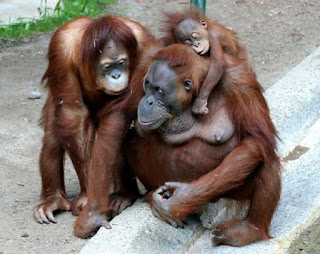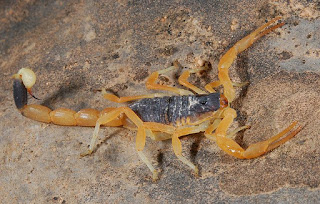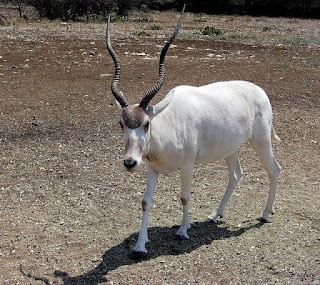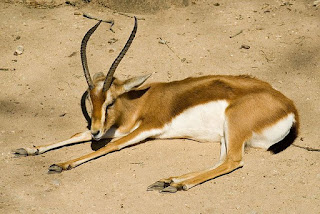So is this the zoo or a candy factory? Your nose can’t tell the difference. These seven animals are olfactory dead ringers for Jelly Belly flavors.
1. BINTURONG (ARCTICTIS BINTURONG) // BUTTERED POPCORN
The back end of the binturong, or bearcat, is legendary. Not for its size, shape, or productivity, but because it smells remarkably like a movie theater lobby. The heavenly scent that wafts across a bearcat habitat originates right in its inhabitants’ anal glands. Like housecats, binturongs are highly territorial and use smell to stake out their turf, but that’s where the similarity ends. While cats will snuggle and rub affectionately to leave their calling cards, a binturong scent-marks by dragging its butt across every object and surface it can find.
2. YELLOW ANTS (LASIUS INTERJECTUS) // LEMON DROP
The yellow ant is kind of a two-for-one deal. Not only do these ants emit an unmistakably lemony aroma, but they also look like little tiny lemons. Or their gasters (behinds) do, anyway.
When a colony of yellow ants is disturbed, its members emit a defensive chemical that smells so much like lemons that some people call these insects citronella ants. If your backyard smells suspiciously like a lemonade stand and there are no enterprising children in sight, take a look—you may have ants.
3. SPADEFOOT TOAD (SPEA MULTIPLICATA) // PEANUT BUTTER
Oh, spadefoot toad, you incredible weirdo. Behind your bulging eyes and claw-tipped hind legs is a gentle soul, a soul that craves solitude. A soul that enjoys a good wallow in the mud. A soul—and a parotoid gland—that will secrete a peanut butter-scented substance that causes sneezing and burning eyes in anyone who touches you. You just want to be left alone, spadefoot toad. We understand.
NOTE: We realize that Peanut Butter is no longer part of Jelly Belly’s 50 Official Flavors collection, but it remains lodged in our memories, our taste buds, and our hearts.
4. AFRICANIZED HONEYBEE (APIS MELLIFERA SCUTELLATA) // TOP BANANA
Their sting is bananas. B-A-N-A-N-A-S.
Let’s rewind a moment: Bee communication is super complex, and ranges from adorable folk dances to hysteria-inducing chemical signals like the alarm pheromone. When a forager bee feels threatened, it sends the scent of fear out into the hive. Other bees pick up the chemical trail and pass along the message, spreading panic. Africanized bees are both more sensitive to the pheromone than their European cousins and produce more of it, which means more panic, which means more stinging. And what does this alarm pheromone smell like to humans? You guessed it: bananas.
5. CRESTED AUKLET (AETHIA CRISTATELLA) // TANGERINE
So far we’ve seen nutty amphibians, citrusy insects, and buttery mammal butts, but what about fruit-fragranced birds? Yeah, we’ve got those, too.
Crested auklets are so fragrant, wildlife biologist Julie Hagelin told Nature, that “it’s like somebody is peeling a tangerine next to you.” The auklets are the first birds known to signal through scent. The seabirds use their oily bills to apply fragrance to their feathers like humans applying perfume, hoping to attract a mate. Smell is such a turn-on for these birds that their greetings consist of sniffing each other’s neck feathers. Toucan Sam could not be reached for comment.
6. GIANT MILLIPEDE (APHELORIA VIRGINIENSIS) // CHERRY COLA
Giant millipedes are kind of scary. They are, as their name suggests, pretty big—some species can be more than 15 inches long—and they brew all manner of poisons when they’re upset. The American giant millipede (Narceus americanus) secretes a liquid that can cause dermatological burns. But maybe these bugs have a bad name. Sure, Apheloria virginiensis may release cyanide when it’s stressed, but it also “has a nice odor, like cherry cola.”
Again: we’ve strayed from the Jelly Belly top 50, but hear us out. Cherry cola jelly beans, while retired from the American J.B. roster, are still a thing in the UK.
7. BEAVER (GENUS CASTOR) // FRENCH VANILLA
In the science world, the vanilla-scented, molasses-like goo that comes out of a beaver’s butt is known as castoreum. In the world of food science, it’s known as “natural flavoring.” When the news hit a few years back that beaver bum-milk was a legal food additive, consumers hit the fan. Fortunately, milking a beaver bottom is a thankless job and the yield is low, which means that most food-grade vanilla flavoring comes from less extreme sources.
































































